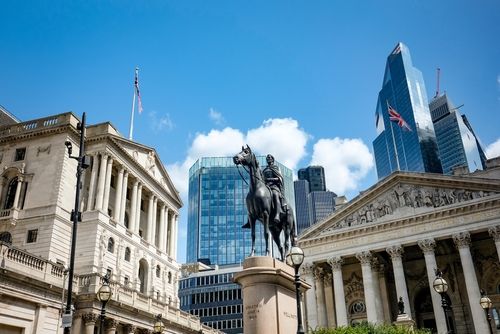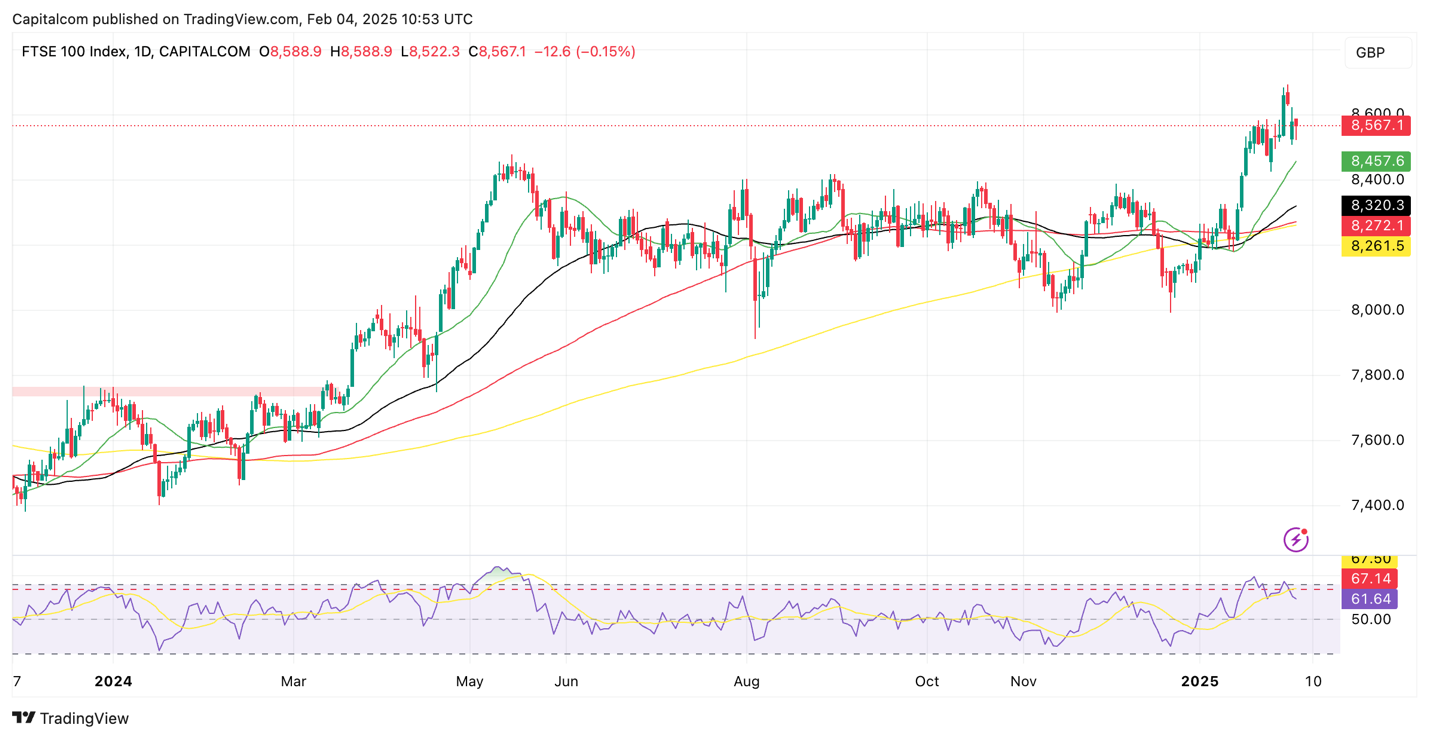BOE Preview: a dovish cut could see a new all-time high for the FTSE
The Bank of England is expected to cut rates this week amid softer inflation and growth in December.
The Bank of England (BOE) is widely expected to cut rates on Thursday at its first meeting of the year, set against a backdrop of persistent inflation concerns and sluggish economic growth. Current market pricing indicates a 97% probability of a 25-basis-point rate cut, marking the third reduction since the easing cycle began late last year.
Inflation and Growth Concerns
Inflation remains a key concern, particularly regarding wage growth. However, the latest economic data has alleviated some fears of runaway inflation. Both headline and core consumer price indexes fell more than expected in December, alongside weaker retail sales and industrial production. These softer economic indicators have reinforced expectations for a rate cut. Despite this, uncertainty lingers over the BOE’s policy trajectory, as inflation still exceeds the central bank’s 2% target.
Market pricing currently reflects expectations of a total of 80 basis points of easing throughout 2024. At the BOE’s December meeting, policymakers surprised markets with a more dovish-than-expected 6-3 vote in favour of maintaining rates, diverging from the anticipated 8-1 split. While recent commentary from BOE officials has largely adhered to expectations of quarterly rate cuts, markets will be closely watching Governor Andrew Bailey’s press conference for insights into the central bank’s future policy direction.
One element to consider is the recent tightening in financial conditions as a result of the surge in global bond yields. This has left the UK in a fragile fiscal position, eroding the GBP 9.9 billion buffer that the newly elected Labour government had allocated for fiscal objectives. Chancellor Rachel Reeves now faces difficult decisions—either scaling back expansionary measures, cutting spending, or increasing taxes. These fiscal constraints could push the BOE toward a more dovish stance than previously anticipated.
Sterling remains vulnerable to sell-offs when fiscal sustainability comes into focus. The US dollar’s ongoing strength has also limited the recovery of GBP/USD, as risk-off sentiment prevails. While a more favourable economic environment could support the pound, rate differentials currently favour the dollar. GBP/USD has rebounded from lows around 1.21 but is encountering resistance near the 1.25–1.2450 range, with lower highs forming after the pair bounced off the 50-day SMA at 1.2525.
GBP/USD daily chart

Past performance is not a reliable indicator of future results.
Impact on the FTSE 100
The FTSE 100 has felt downward pressure following recent tariff announcements from U.S. President Donald Trump. The bullish momentum seen after last month’s softer CPI data has faded, leaving the index vulnerable to broader market sentiment. While the UK has not been directly targeted by tariffs, potential slower growth among key trading partners could negatively impact Britain’s economy.
Despite these concerns, the delay in implementing tariffs on Canada and Mexico after Trump’s discussions with their respective leaders has provided some relief to equity markets. This helped the FTSE 100 recover some ground on Monday, although short-term outlooks remain uncertain.
Domestically, a BOE rate cut could renew investor interest in UK stocks. However, market sentiment will hinge on the central bank’s messaging. Any signals of further dovishness could reignite bullish momentum, though the medium-term trajectory will depend on upcoming economic data and fiscal policy developments.
FTSE 100 daily chart
 Past performance is not a reliable indicator of future results.
Past performance is not a reliable indicator of future results.